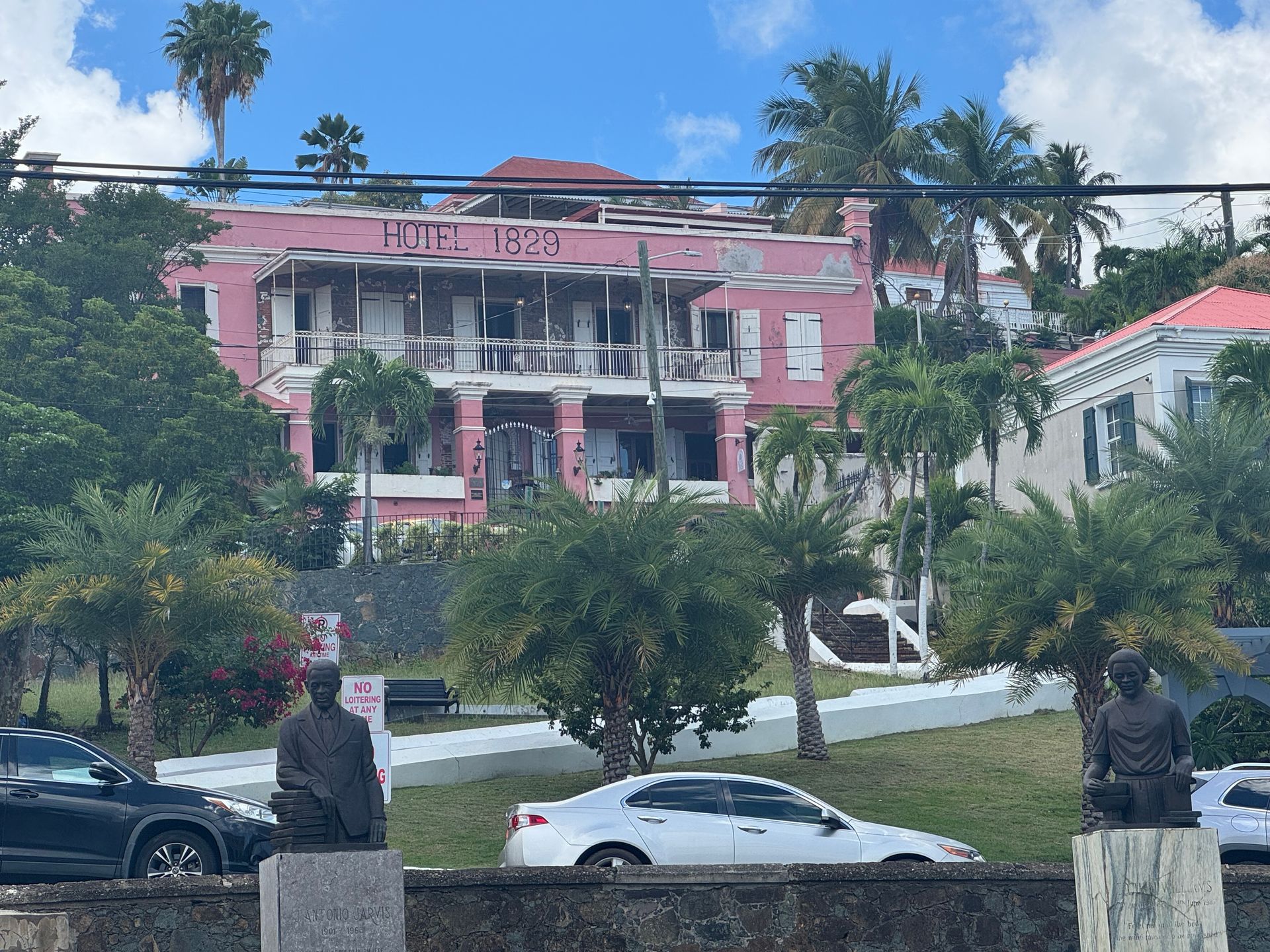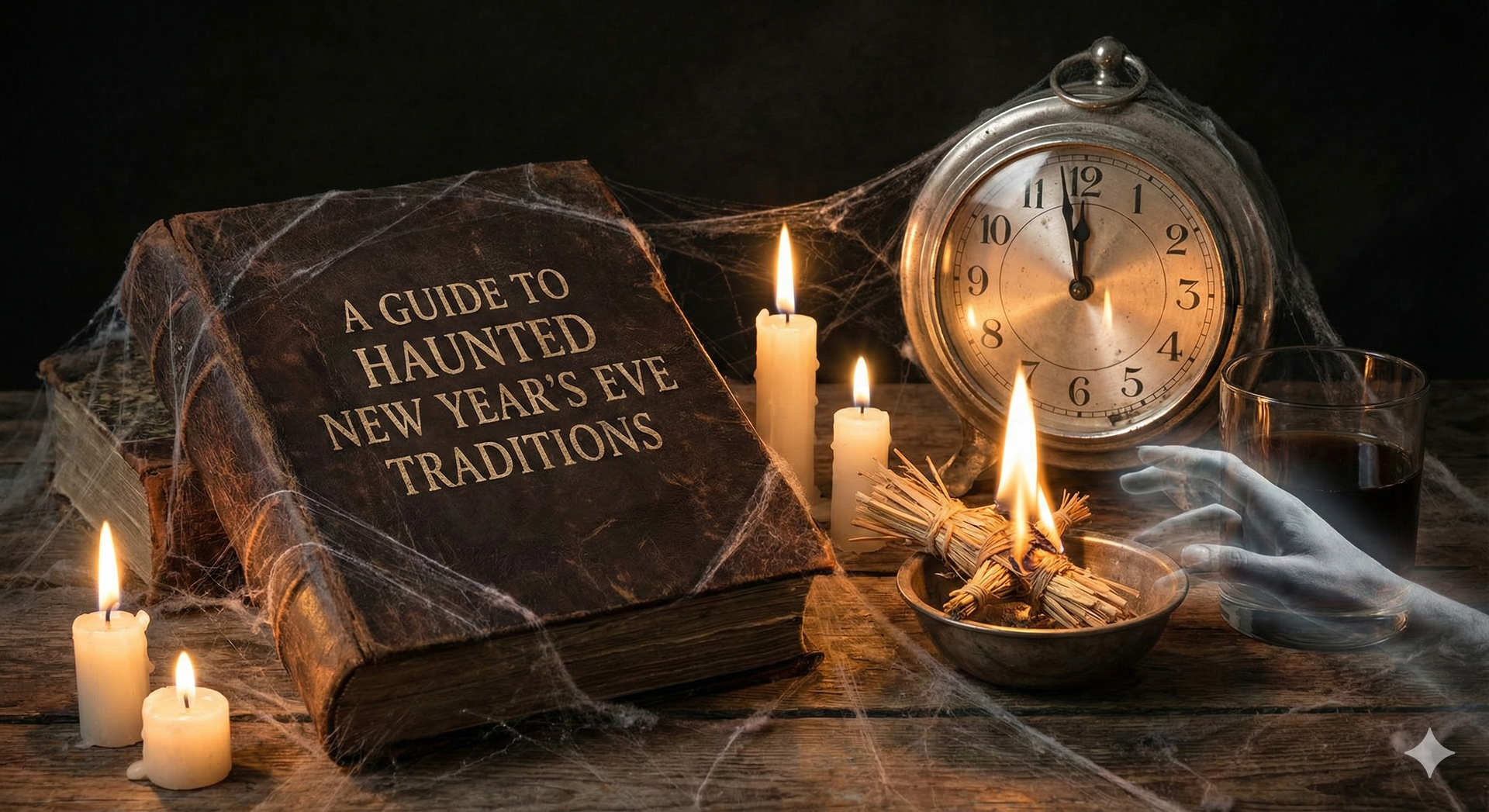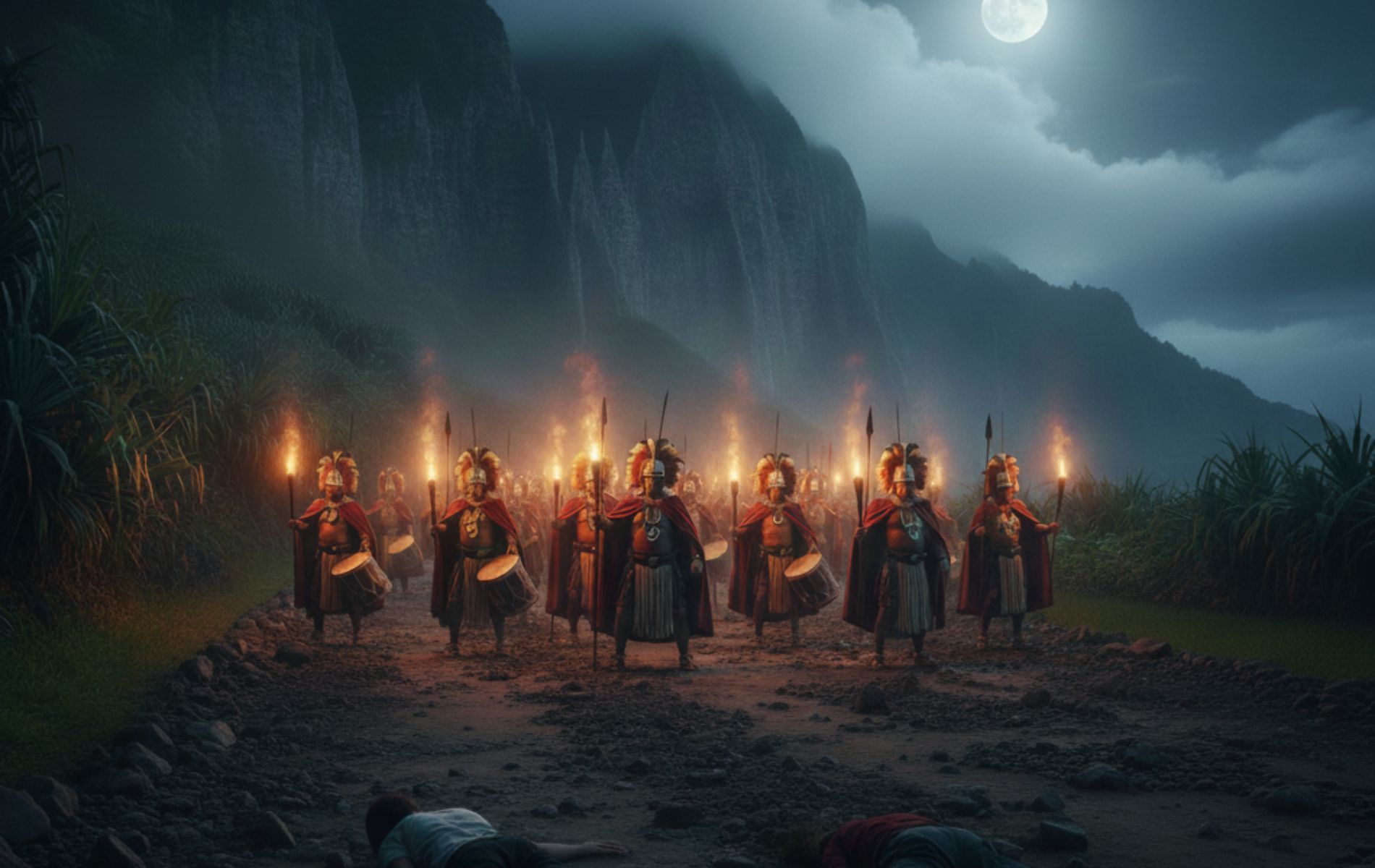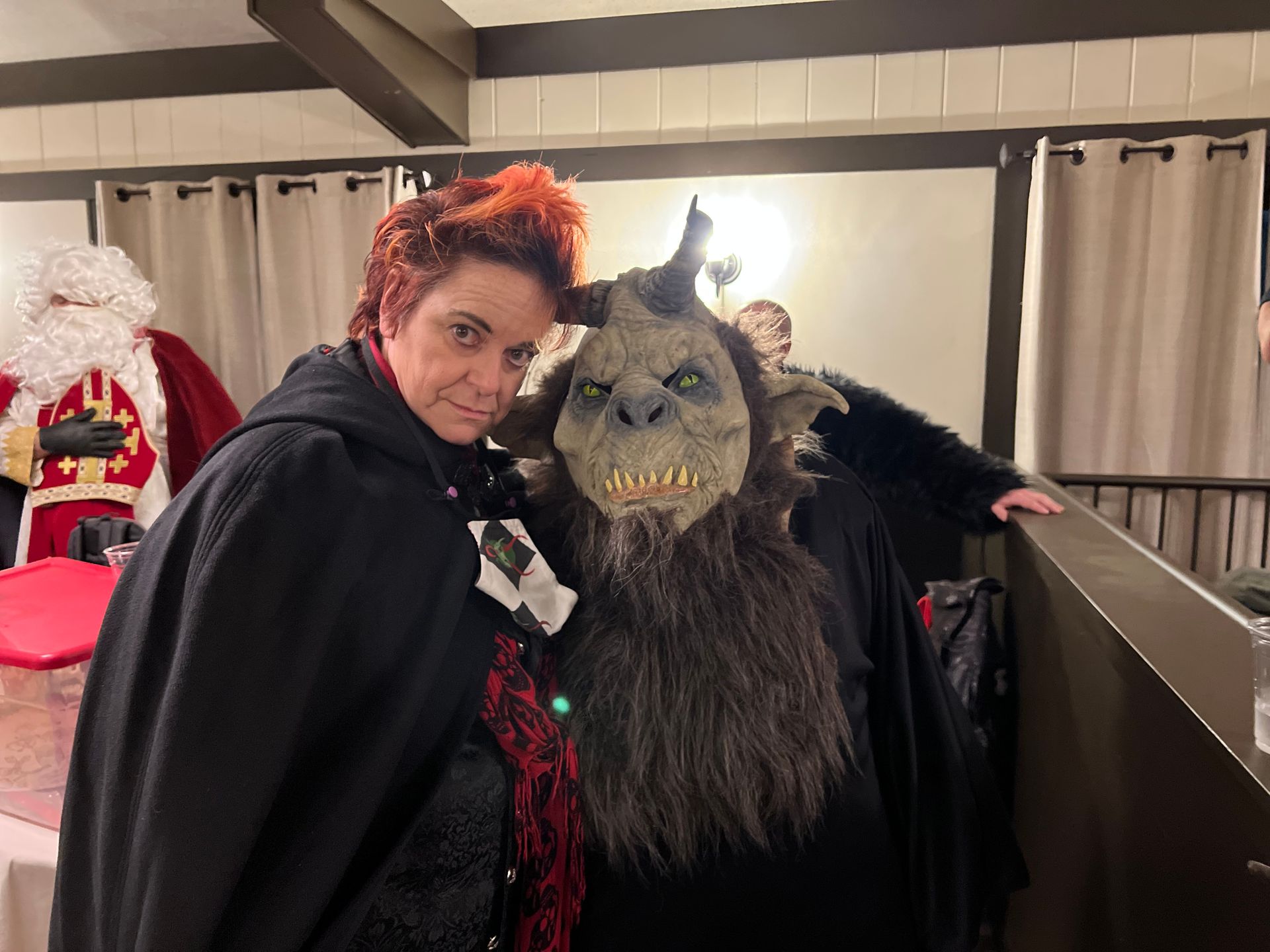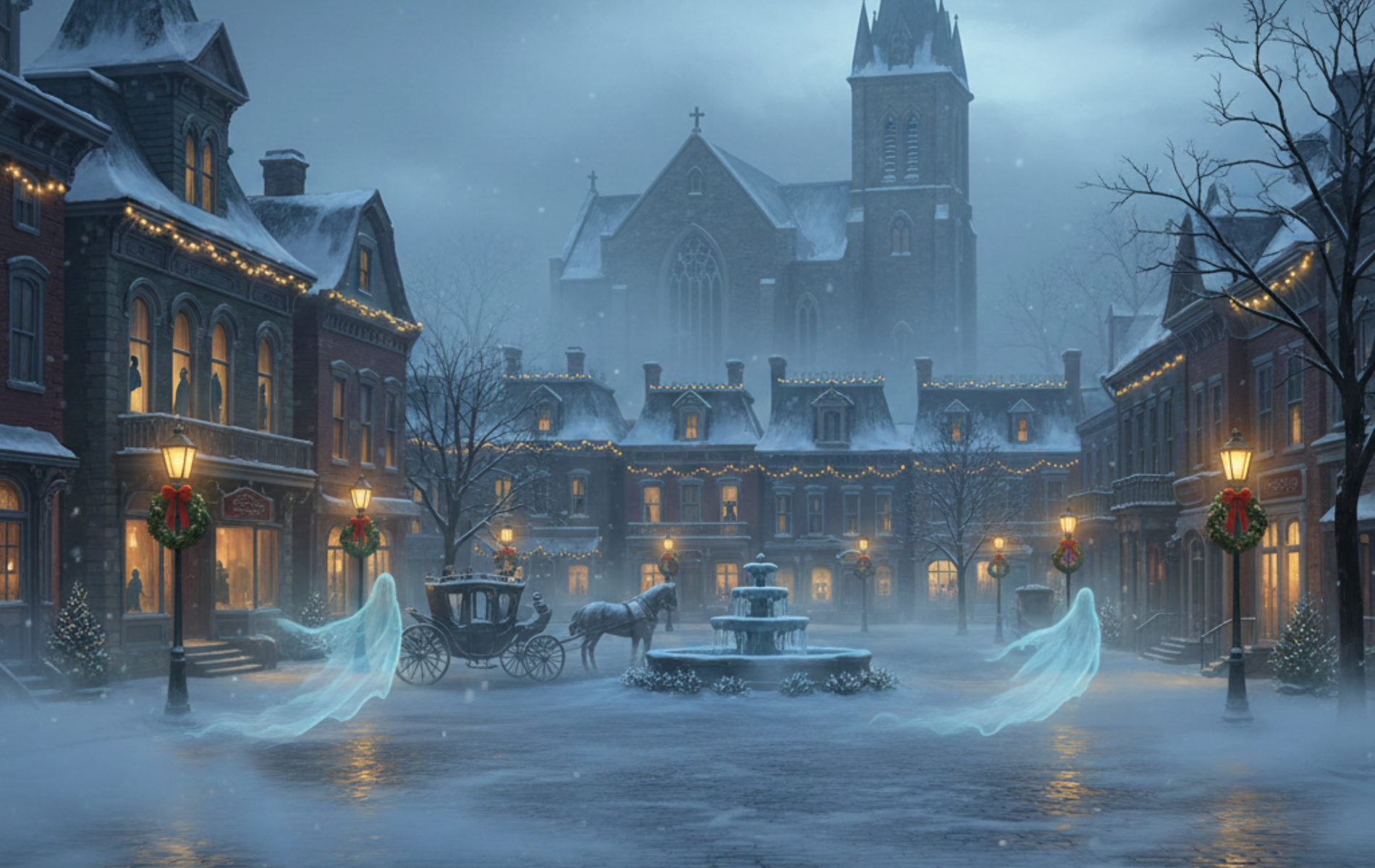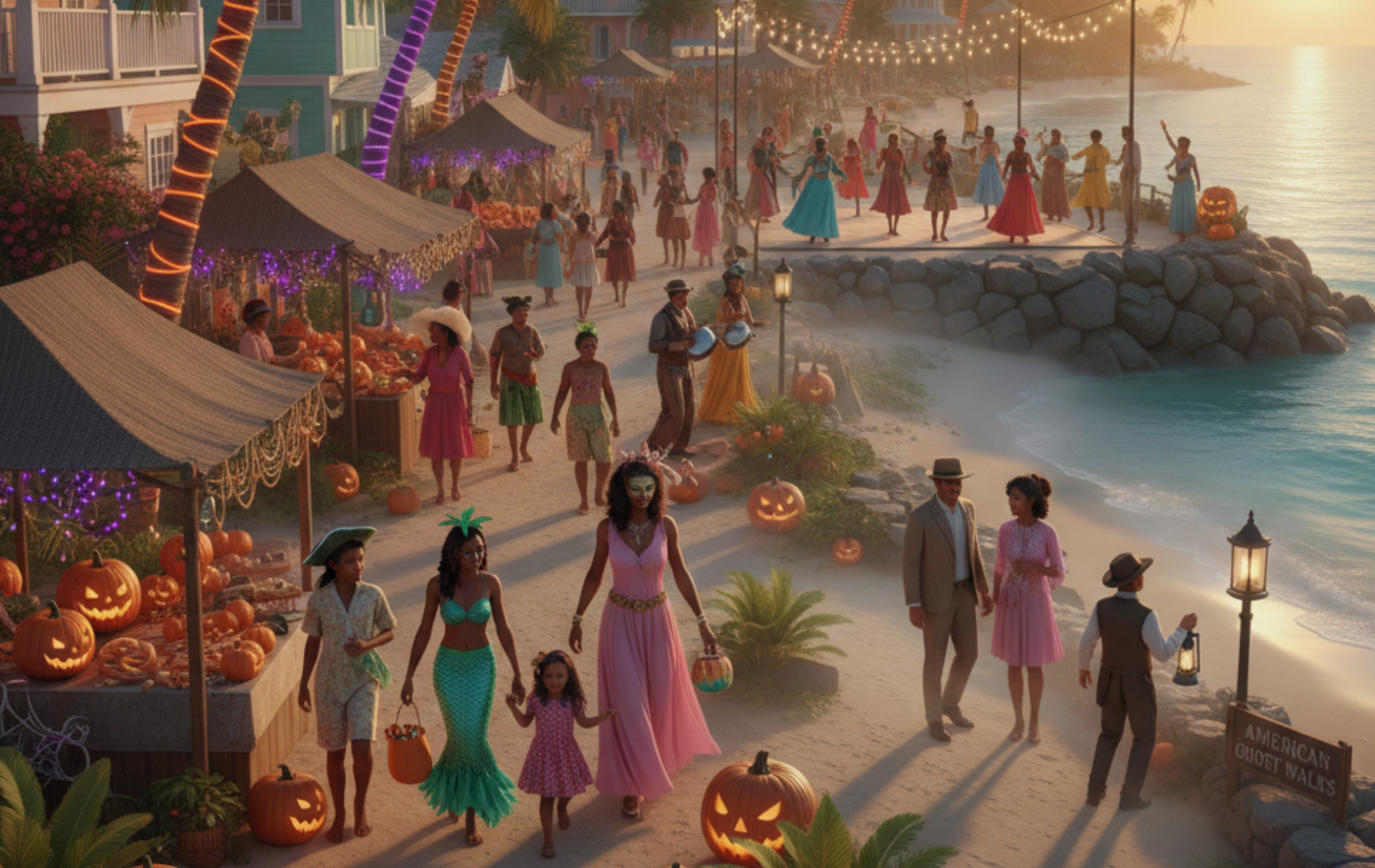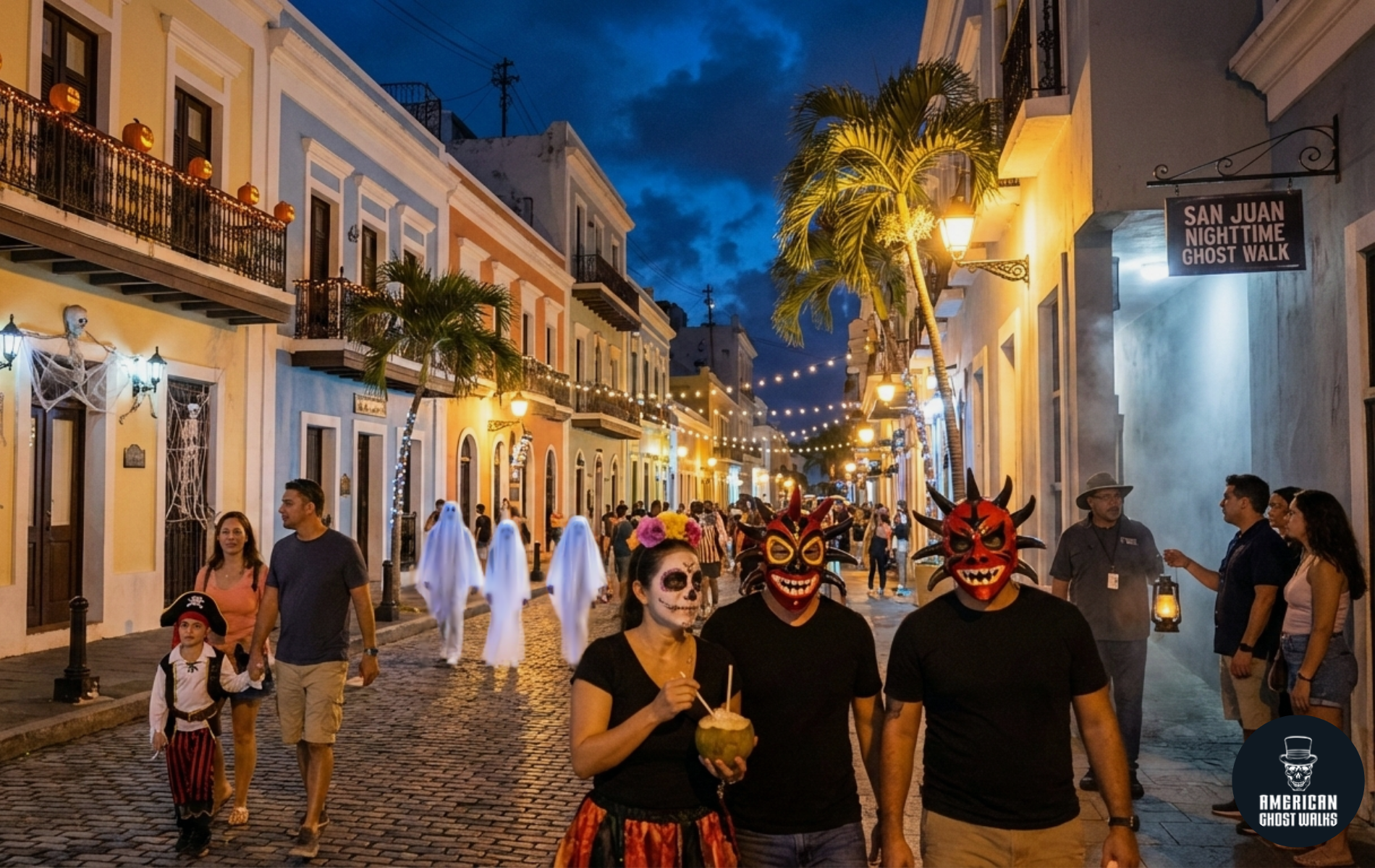The Liberty Pole and the Ghosts of Benedict Arnold
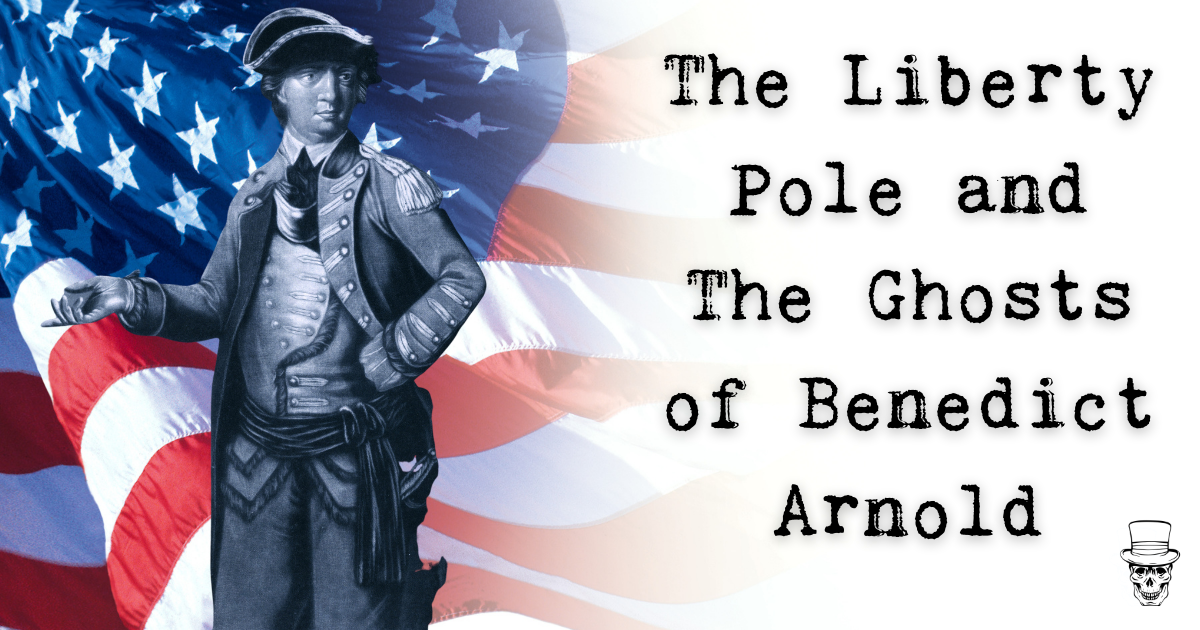
Liberty Poles were rallying points for the Sons of Liberty in the years preceding the American Revolution. The poles were much taller than other flagpoles and often used a red cap (liberty cap) or a red flag as a signal for the men to meet. As time went on, the flag became nine alternating red and white vertical stripes. The Boston Liberty flag is displayed today at the Old State House in Boston.
The Sons of Liberty, a secret society formed to fight taxation by the British government and to protect the rights of colonists, are best remembered for the Boston Tea Party.
The Sons of Liberty mostly met at night and often at a Liberty Pole or a “Liberty Tree,” such as a particular Elm tree in Boston where they met in reaction to the Stamp Act. When the British cut it down, the group replaced it with a Liberty Pole. Some towns that didn’t have large common trees, put up a tall Liberty Pole anyway, as a symbol of the tall Liberty Tree, and often towns vied to have the tallest Liberty Pole.
Poles were sometimes placed on private land, as well. Often, someone found guilty of drinking tea or thought to be leaning toward the British, was made to dance around the Liberty Pole and recant their ways.
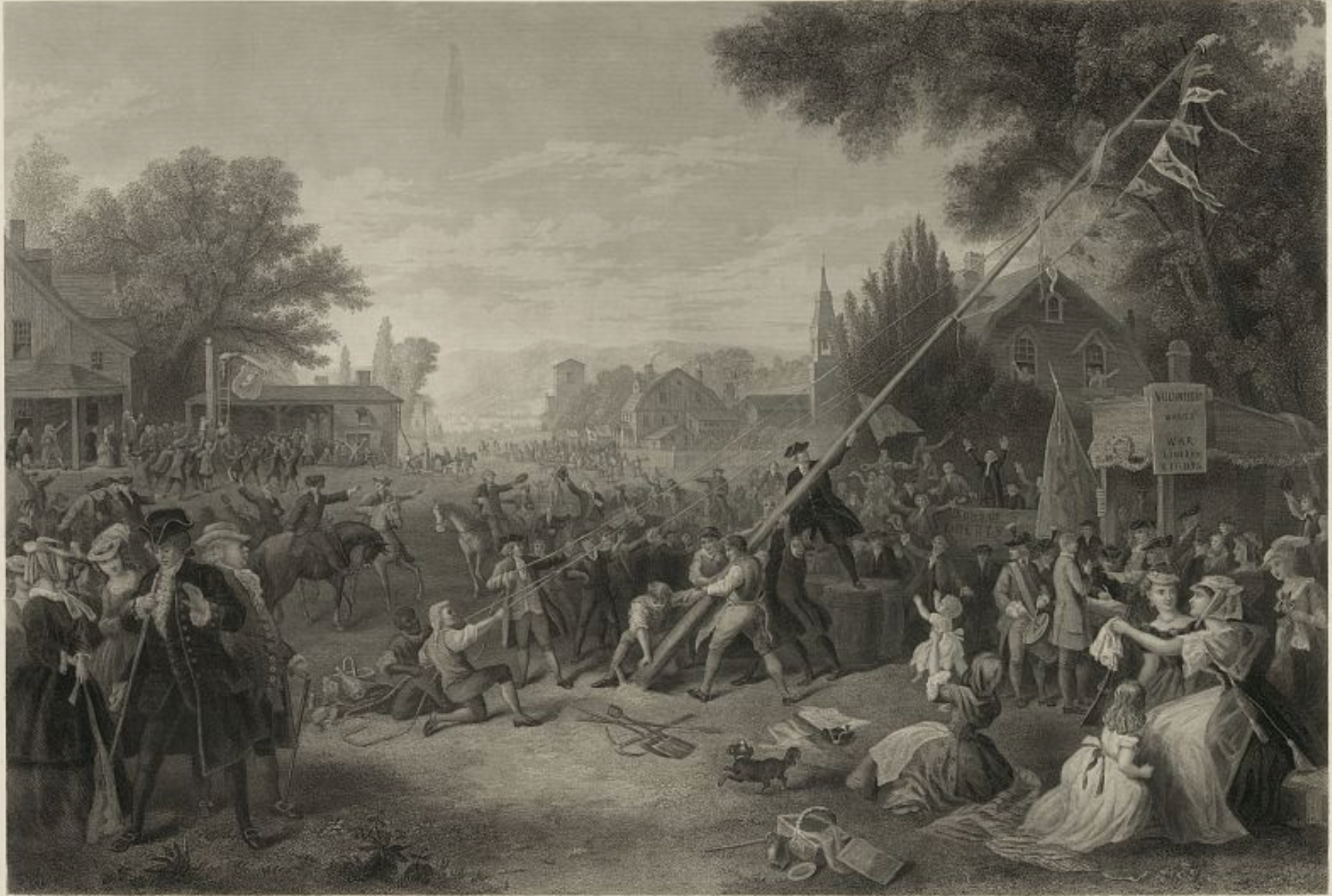
Raising the liberty pole by F.A. Chapman, 1776
The poles became rallying places for both sides – the American Colonists of course, but the British often took down the poles, or tried to, to try to stop the resistance. In Massachusetts there is an area outside of Boston that is referred to as the “Liberty Pole Area” and many streets throughout New England are named Liberty Pole.
In Machias, Maine, it was a Liberty Pole erected in 1775 by the O'Brien brothers (for whom an entire class of US warships would eventually be named) that sparked a fight with British Sea Captain James Moore who was bringing the town news of the "Shot heard around the world" in Lexington. When Moore saw the Pole he demanded they take it down, but the townsfolk wouldn't hear of it and their resistance to the King's tyranny led to the first naval battle of the American Revolution.
During the Civil War, and after, Liberty Poles, or Union Poles were erected to encourage patriotism and as a symbol of the “Binding of the Union.” Some were erected as early as April 1861, shortly after the firing on Fort Sumter. Gettysburg had one 120 feet tall by the end of April.
Slaves and members of the underground railroad also used Liberty Poles for signals and freedom celebrations. There is a town in Wisconsin named “Liberty Pole" and in Fairfield, Connecticut they used to hold a “Union Festival” which re-enacted the raising of their 110 foot pole in 1861. It included picnics, period actors and patriotic orations.
Towards the end of the Civil War in 1864 Bristol Mills, Maine, a group of men were talking at Arnold Blaney’s store. The subject of a Liberty Pole came up and Joe Crooker, who was known about town as a real frugal Mainer, “he had the tendency to squeeze a nickel until the buffalo hollered,” boasted that he would donate the wood needed to put one up in the center of Bristol Mills, across from the Congregational Church and next to the Town Hall.
No one believed him, but to add fuel to the fire, Arnold Blaney himself said "if Crooker showed up with the wood, he’d not only donate a barrel of flour to Widow Oram and her 3 children, but he’d roll it all the way to her house." Well, a week or so later, the men were astonished when Ol’ Joe, in his 60’s, appeared with a wagon load of lumber for the Liberty Pole! He’d purchased enough wood for a 60 foot Liberty Pole.
Well, the next thing the village knew, Arnold Blaney was rolling a barrel of flour from his store, through town and up the hill on Upper Round Pond Road to Widow Oram’s door.
While that might be a charming story of how a Liberty Pole can bring a town together, in 1861, the town of Norwich Connecticut, like Fairfield, also rededicated their Liberty Pole as a symbol to keep the union together. Because a century earlier, the Sons of Liberty used to gather around that Norwich Liberty Pole. And one of those Sons was none other than a Revolutionary War General who would become the world’s most famous traitor, Benedict Arnold.
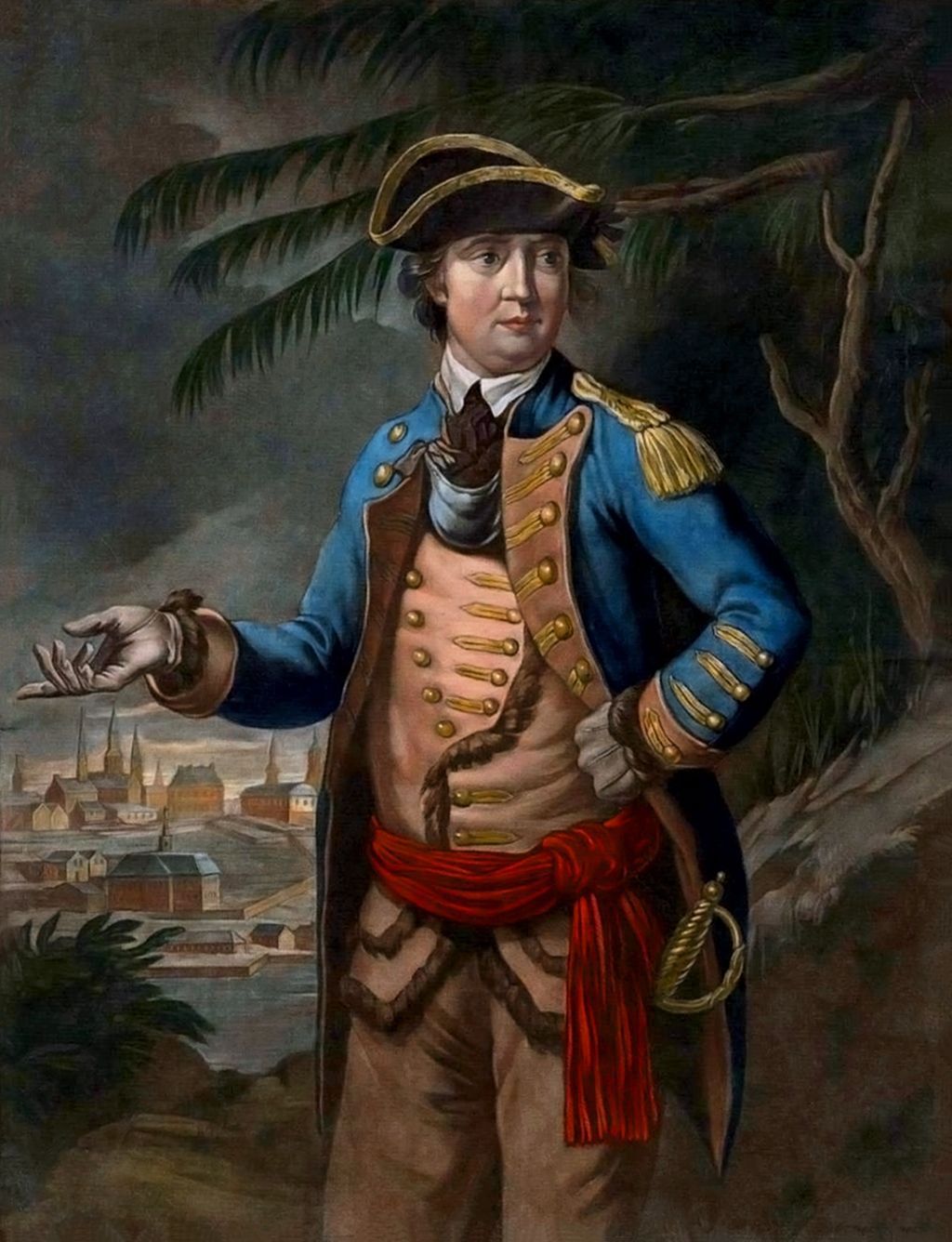
Colonel Arnold: Hero of the 1877 Battle of Saratoga
Arnold was thought of as a true patriot when he became the hero of the 1877 Battle of Saratoga. He became renowned for his bravery as he rode out in front of the troops to defeat the British and was shot in his left leg (there’s even a monument to the leg at Saratoga National Park today, however one that purposely fails to mention him by name.)
While he was recovering from that injury, he felt slighted by seeing other officers get promoted before he was. He was put in charge of Philadelphia after the British retreated from the vity and while he was there he married a woman from a prominent family still loyal to the Crown.
Not long after, his sympathies began to shift. Still, General Washington trusted Arnold the command at West Point, an important fort to the independence effort. It was there, he became a turncoat and tried to surrender the fort to British forces for the sum of twenty-thousand pounds, but his co-conspirator (a close friend of his wife’s), Major John André, the leader of the British Secret Service in the colonies was captured and the plan was foiled.
Arnold then escaped to the Loyalist side and ended up leading British forces in several attacks on the colonies. He even published an open letter to "The Inhabitants of America” in a New York newspaper in 1780 justifying why he switched sides. He would later move to Canada and then to London, where he died in 1801.
Arnold was born in Norwich to an alcoholic father who squandered the family fortune, and his family certainly seemed cursed as two of his siblings died young of sickness in the colony. He was apprentices to a local Dr. Lathrop for seven years, but it doesn’t sound like he was very popular. From the book, Old Houses of the Antient Town of Norwich [Conn.] 1660-1800 by Mary E. Perkins written in 1895:
“Dr. Daniel Lathrop and his wife bestowed [conscientious and kindly care] upon their apprentices, receiving them into their own family, and constantly striving to bring them up to be good and useful members of society. But their efforts were wasted upon Benedict Arnold. He abused the cats, the dogs, and the horses, dismembered the birds, and stole and crushed their eggs. When dispatched to the mill for Indian corn, he would frighten the miller by clinging to the spokes of the revolving wheel, at one time submerged, then again flying through the air, while the miller called him ‘an imp of the Evil One.’”
And it was as a young man in Norwich that Arnold first met with the other Sons of Liberty as they discussed their own anger with the 1765 Stamp Act. They felt it unfair that they were being taxed with no representation in the British Parliament. But associating with Arnold wasn't a good idea in the long run, for many of the people who did can't seem to move on, even after death.
First, his mother, Hannah, passed away when he was 18. Indeed, it’s at her grave that Norwich residents have said Benedict’s ghost rides in on a white horse to visit every Halloween to pay his respects to her spirit. And in an acknowledgement to his famous war injury, they say you know it’s him because you can see his ghost limp away (the left leg ended two inches shorter than the right leg after the injury.)
While no one’s gotten a good photo of the traitorous ghost entering the cemetery, for years, an anonymous admirer has left flowers and mementos mysteriously at his mother’s grave site, calling the mysterious gift-giver, the “Norwich Visitor”.
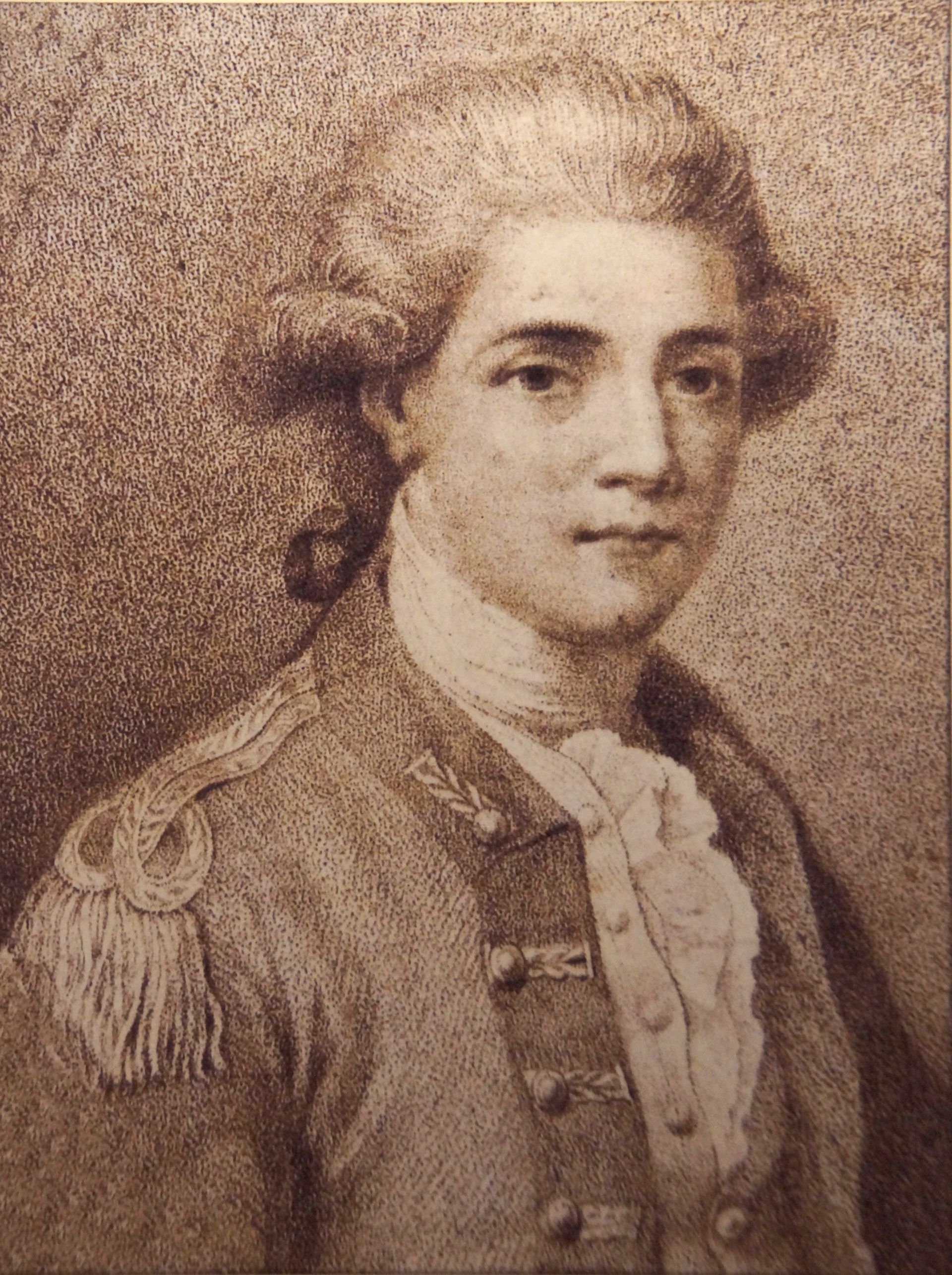
Portrait of Major John Andre by himself, 1780
Also, the building where Arnold’s partner in crime, Major André was imprisoned by the American army is a notorious haunted hotspot as well. Andre was captured in Sleepy Hollow (of Washington Irving fame) but he was imprisoned before his execution in Tappan, New York. The old prison is now a restaurant known as the 76 House that features ghost hunts on select nights, where people have experienced a plethora of paranormal activity and have even seen figures in the traditional British Redcoat military uniform.
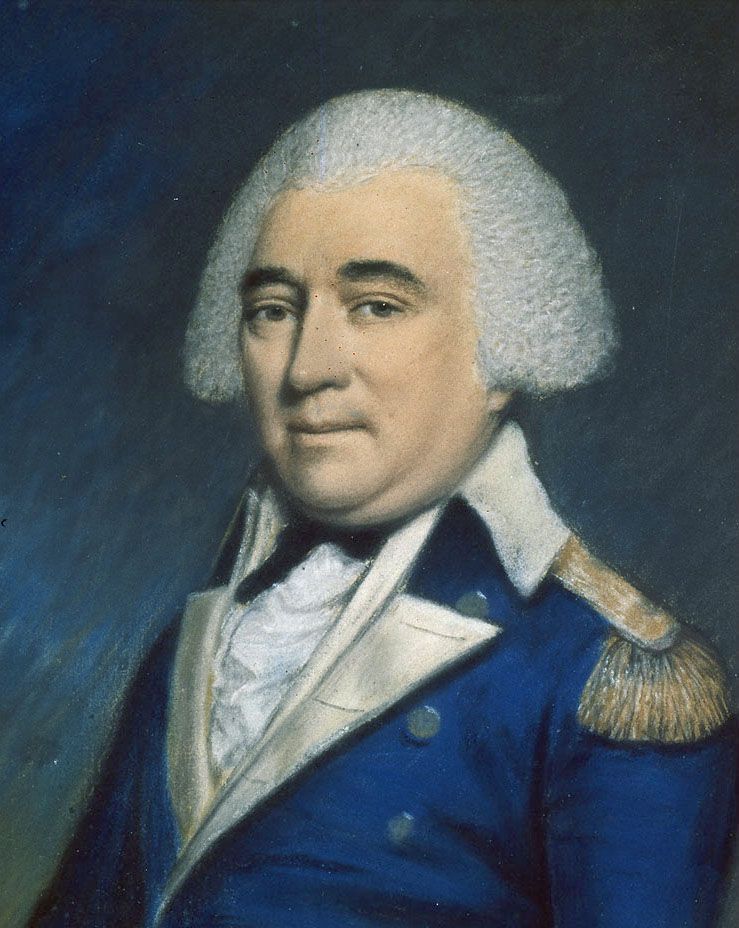
Portrait of Brigadier General Mad Anthony Wayne, painted by James Sharples ca. 1796
Brigadier General “Mad Anthony” Wayne, who heroically fought with Arnold at the Battle of Trois-Rivières also seems to not be able to go into the light. He died in 1896 and was buried near Erie, Pennsylania. However, his family decided to have him reburied closer to them on the other side of the state. When the excavators exhumed his body though, they thought they would find a skeleton.
However, the body they found was not as decomposed as they expected, so they decided to boil the flesh off so it would be easier to transport a bag of bones rather than a decrepit corpse. The legend has it that when the family got the bones back and tried to reassemble Wayne’s skeleton, some were missing. They were lost along the journey and legend has it that on New Year’s Day (Wayne’s birthday), you can see his ghost riding along Route 322 searching for his bones so that his body can be whole once again.
In a sadder tale, one of Benedict’s fellow Norwich Sons of Liberty, Hugh Ledlie, bought the house Arnold grew up in to raise his family in 1764. However, his family lived in constant turmoil because it was said that his wife, Chloe, was insane and had to be physically confined in the house until her death in 1769.
She birthed two children, one who died in infancy and according to Clare Walker Whiteside’s 1926 book, “Touring New England On The Trail of the Yankee”, “it quickly attained the reputation for being haunted. Tenants succeeded tenants who were only too glad to leave the premises.” It fell into disrepair but was finally torn down in 1855 after lightning struck and damaged what was left of the place. According to Whiteside, “This electric shock… was perhaps necessary to purify it thoroughly from the Arnold taint.”
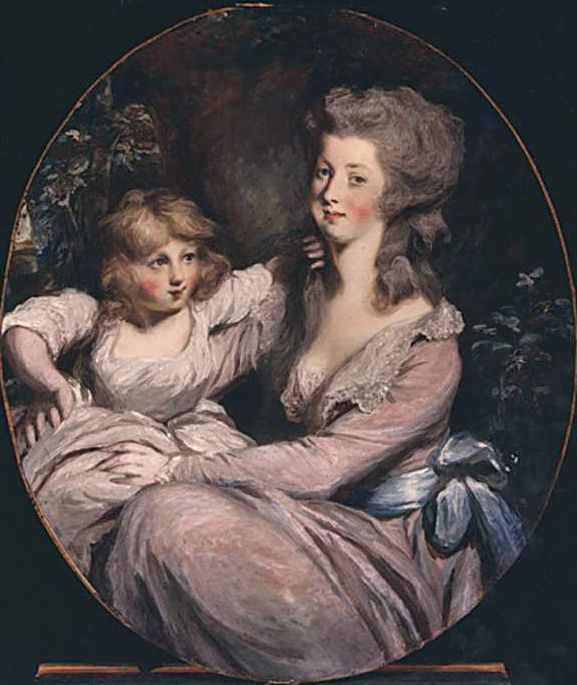
Portrait of Peggy Shippen and her Daughter by Unknown Artist, 1780s.
Arnold’s Loyalist wife, Peggy Shippen, hasn’t been spared from her restless spirit walking the Earth either. The ghost of a young woman wearing a lavender and beige gown has been spotted at the Powel House in Philadelphia. It was said that the dress was last worn by Arnold’s wife at a party she attended at the house, which was certainly possible considering that the Powel House was built by a Philadelphia mayor who had married one of her cousins.
The final indignity for Benedict Arnold however may be the ghost that the many people have seen. In the 1976 Scooby-Doo/Dynomutt Hour episode, “Spirits of ‘76”, the Scooby Gang runs into both the ghosts of Benedict Arnold and Major André while investigating the “Splitstonian Institution” in Washington D.C.
Of course, Arnold and André aren’t revealed to be real ghosts, but just criminals using paranormal activity as a cover for their nefarious activities to steal money from the museum. And they would have gotten away with it too, if it weren’t for those meddling kids.
Discover the haunted history of the Liberty Pole and the ghostly tales of Benedict Arnold with
Portland's Ghost Tours.
Explore Maine’s paranormal past with us, and check out our Portland, ME ghost tour reviews on Google to see what others are saying. Ready for a haunting adventure? Book your tour today!"

